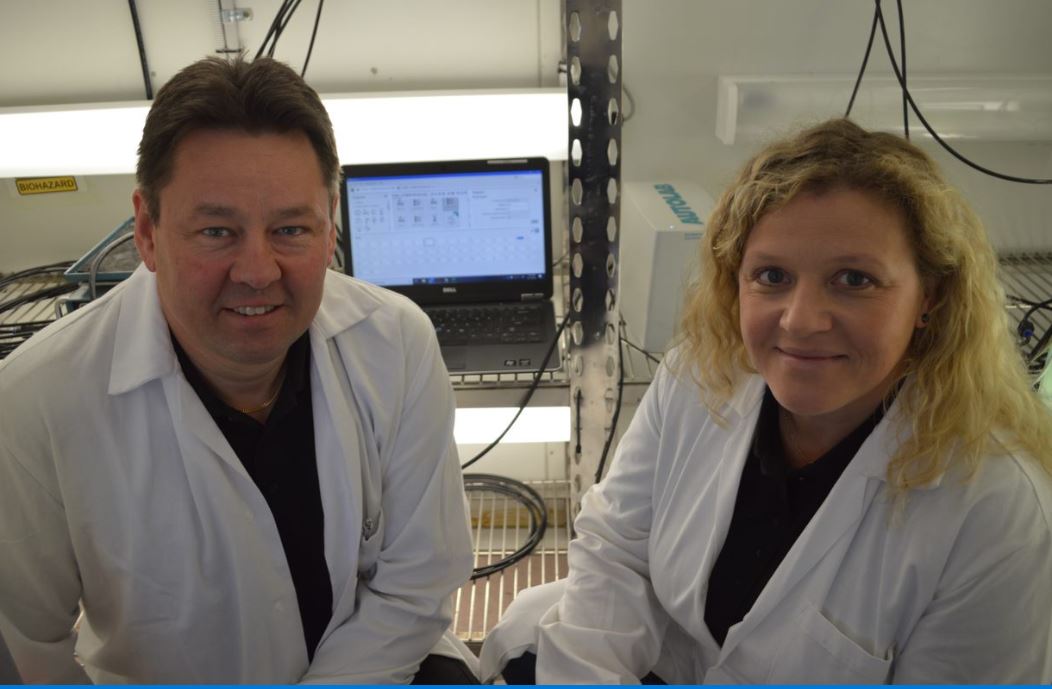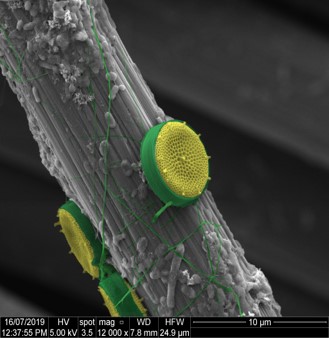
Unwanted organisms transported by sea present Australia and other countries with biofouling and environmental problems that cost marine industries billions of dollars to eliminate.
Flinders University researchers have received a $150,000 State Government grant to develop and test new state-of-the-art coatings to prevent the growth of such bio-contaminants.
The Defence Innovation Partnership grant, with partners at ASC, Defence and the University of SA, will focus on delivering electrically conducting carbon-based coatings to prevent the growth of unwanted organisms on marine surfaces.
Project leaders Professor Mats Andersson and Associate Professor Sophie Leterme, who lead a research group called the Flinders Biofilm Research and Innovation Consortium (or BRIC), say maritime industry and naval ships and submarines also have a problem with buildup of marine organisms on hulls and other surfaces.
“Unwanted marine organisms grow on all surfaces and environments immersed in seawater,” they say. “A fully developed biofouling community can, after just several months growing on an unprotected vessel, cause up to 40% more fuel consumption due to additional hull drag and poor manoeurvrability.”
Underwater coatings for the prevention of such marine growth include low surface energy fouling release coatings or anti-fouling paints, which contain slow-release biocides.
The new project will focus on better environmental and anti-fouling techniques to protect vessels and harbors and marinas in more sustainable ways.
The new coatings will be tested in seawater, with DNA testing of marine organisms to test the results. Over more than four years, Flinders University researchers have developed the chemically engineered carbon-based coating to draw copper ions from sea water and then release them using electrical pulses.

Preliminary research by BRIC group has shown that the marine growth or biofouling can be prevented by applying a light current of energy, presenting an opportunity for further development.
Three other projects were announced by the State Government in the latest $600,000 Defence Innovation Partnership round:
· $150,000 for the preliminary 3D and functional design of a large-scale submarine vehicle to provide future hydrodynamic testing and simulator-based training while upskilling the future workforce in Industry 4.0 techniques and manufacturing processes with local SMEs, led by the University of Adelaide with partners Saab, ASC, the University of South Australia, Flinders University, the University of Tasmania, TAFE SA and Defence.
· $150,000 for the development of improved target detection capability for marine radars to support decision making of the Royal Australian Navy and Royal Australian Air Force, led by the UniSA with partners Redarc, Raytheon, Raytheon Anschutz, University of Adelaide and Defence.
· $150,000 for the application of narrative visualisation techniques to Defence simulations to improve decision making in force design, led by UniSA with partners Saab, Genix Ventures, University of Adelaide and Defence.
Over two years, the SA Defence Innovation Partnership’s Collaborative Research Fund has awarded almost $1.9 million to 11 collaborative projects, leveraging more than $4 million of university, defence and industry contributions.
“These projects will engage some of our best scientists and researchers with Australia’s leading defence research organisation, Defence Science and Technology (Defence), and industry to tackle a range of defence issues,” says SA Premier Steven Marshall.
“The projects will help deliver advanced defence technologies and capabilities, and enhance defence innovation in South Australia.
“When research institutions, academia, and industry come together in such a way as this, it results in impressive advances that will build our industry capability for the major defence projects centred in South Australia.”

